IMBB 27: The Joy of Soy
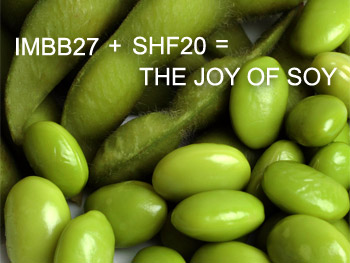
I know of no other food that is as versatile as soy. In its natural state above, it resembles green peas. It can also stand in for milk (as soy milk), custard (as silken tofu), cheese (as firm tofu), meat (as tofu or tempeh), flour (as okara), nuts (as roasted soy nuts) and salt (as soy sauce or miso). High in protein, fiber and antioxidants but relatively low in fat, soy is a staple in my kitchen.
For the monthly themed cooking events, Is My Blog Burning and Sugar-High Friday, Reid at ‘Ono Kine Grindz has asked bloggers to make soy cuisine.
After making soy-sauce candied walnuts, I decided to experiment more with soy sauce in desserts. Soy sauce essentially tastes like caramel-flavored salt, so the idea isn’t too far-fetched.
For my first creation, I made chocolate caramels with soy milk and soy sauce. Out of my two experiments, this one seemed like the safest bet. As the Kikkoman website says, “Kikkoman Soy Sauce…..In Chocolate? Absolutely! Naturally brewed soy sauce can enhance more than just savory flavors — its salty brewed flavor depresses the extra sweetness typical of chocolate syrups and enhances the richness of the cocoa powder. It also helps to blend dairy notes and highlights the fruit top notes of the cocoa. The result: a deep, nutty, roasted chocolate flavor with a rich color.”
These low-fat caramels were tasty for what they were, but they were slightly grainy. I don’t know whether it’s because I used homemade soy milk, which naturally has pulp. Or perhaps the granulated sugar crystallized, in which case more honey was needed. Also, soy milk curdles at the slightest introduction of acid, which was in the natural cocoa powder. You may fare better with commercially prepared soy milk, which is smoother and has thickeners.
My candy also did not set up, even in the freezer. I’ve clarified the instructions, so cook the candy until it reaches the softball stage–248 degrees F. I think these would have tasted better with plain old salt, but if you’re adventurous, add the soy sauce in the end, so you don’t cook out its delicate flavor.
Chocolate Caramels
Adapted from The Soy Dessert and Baking Book
This is a great way to sneak nutrients into candy.
Ingredients:
½ c sugar
1 c vanilla soy milk
1 Tbsp unsalted butter
1 tsp honey
2 Tbsp cocoa powder, sifted
1 tsp soy sauce or 1/4 tsp salt
Method:
Line a loaf pan with greased foil.
Over medium heat, melt sugar in a sauce pan, stirring until it has completely dissolved and is light golden in color. Gradually stir in soy milk and bring mixture to boil. Reduce heat to low and simmer 10-15 min., uncovered. Add butter, honey and cocoa and salt (if you’re not using soy sauce) and continue boiling and stirring for another 10-15 min., or until mixture thickens (about 248F) and shrinks away from the bottom and sides of the pan. Stir in soy sauce (if using). Pour into the greased pan and cool 10 min. While still warm, cut caramels into approximately 18 pieces. Wrap in individual candy wrappers. The leftovers freeze well.
Now, what could possibly be weirder than chocolate and soy sauce? How about a dessert where the soy sauce doesn’t have “milk” or chocolate to hide behind? A dessert with just three ingredients? (Two if you don’t count the orange zest, which I didn’t use. Or one if you don’t count the sugar, which is mandatory in dessert.) It’s soy sauce sorbet, which Kikkoman features on its website, along with soy sauce chocolate sauce and soy fruit charlotte.
At first bite, the sorbet has an off-putting fermented flavor, but it gets better as you eat it. It’s the easiest way to make a refreshing “caramel” sorbet without having to caramelize the sugar. Serving it with chocolate sauce does double duty. The chocolate sauce offsets the sorbet’s saltiness, while soy sauce brings out the chocolate flavor.
The sorbet is slightly icy, like a granita. You can add more sugar if you want it smoother.
Now that my experiments are done, I declare soy sauce too weird to put in desserts. At least I tried. If you like Sam Mason-style desserts (ancho caramel or miso ice cream, anyone?) from WD-50, these might be up your alley.
Soy Sauce Sorbet
Adapted from a recipe by Chef Michael Bloise, Wish at The Hotel at South Beach (Miami Beach, FL)
Yield: 6 cups
4 cups water
1 1/3 cups sugar
2/3 cup low-sodium soy sauce (or substitute 1/3 cup regular soy sauce plus 1/3 cup water)
4 teaspoons grated orange zest
2 Tbsp vodka (optional but recommended to keep the sorbet from freezing hard)
Stir together all ingredients until sugar is dissolved. Freeze in an ice cream freezer according to manufacturer’s directions. Serving suggestion: Chef Bloise serves a small scoop of Soy Sauce Sorbet with ginger carrot cake.


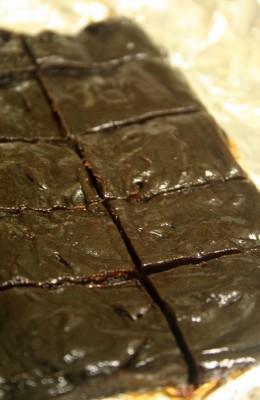
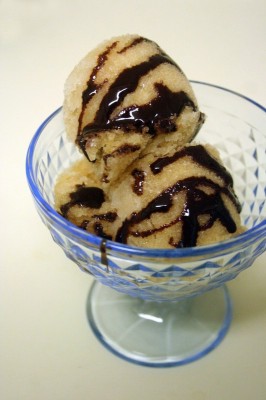





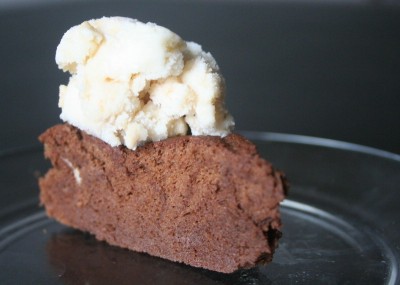
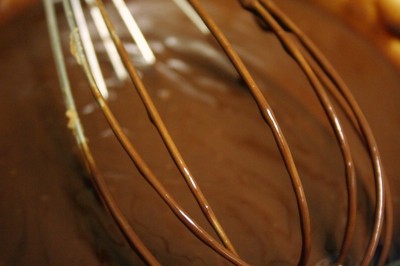
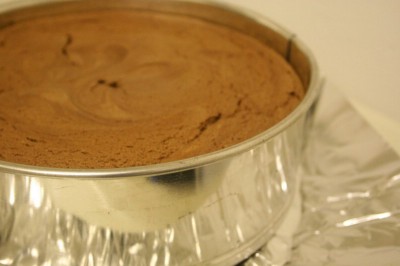
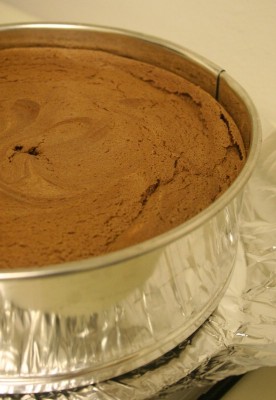

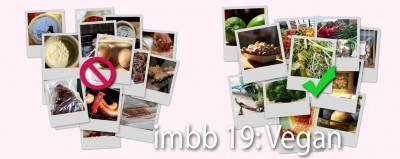



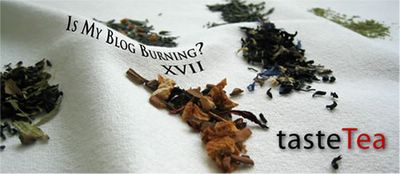






 Ooh, nice and crusty! While this cake was baking, the entire kitchen smelled like gingerbread.
Ooh, nice and crusty! While this cake was baking, the entire kitchen smelled like gingerbread.